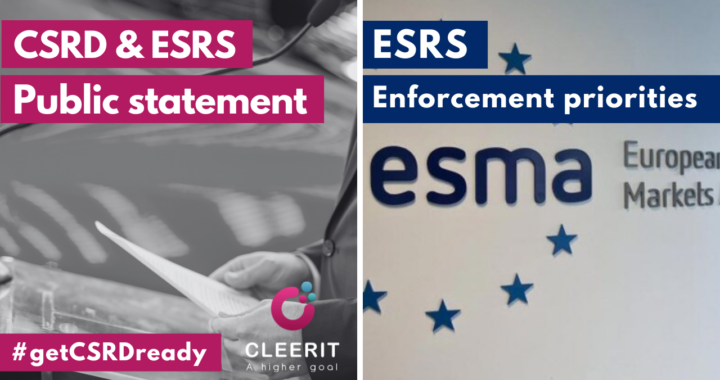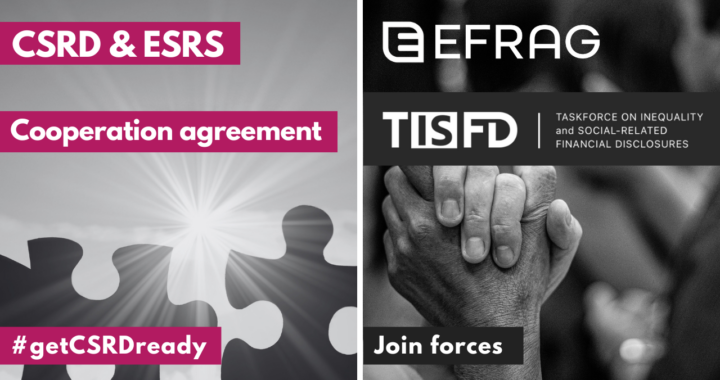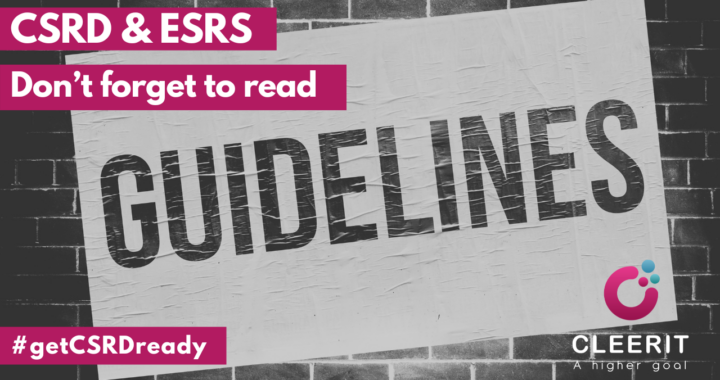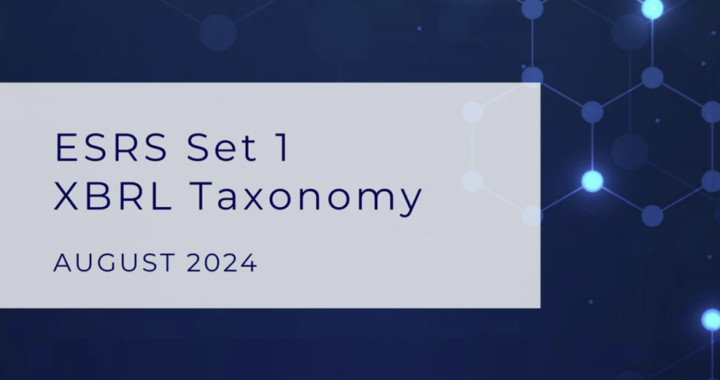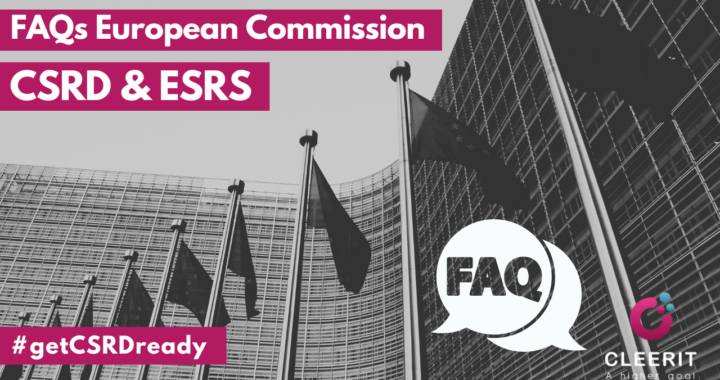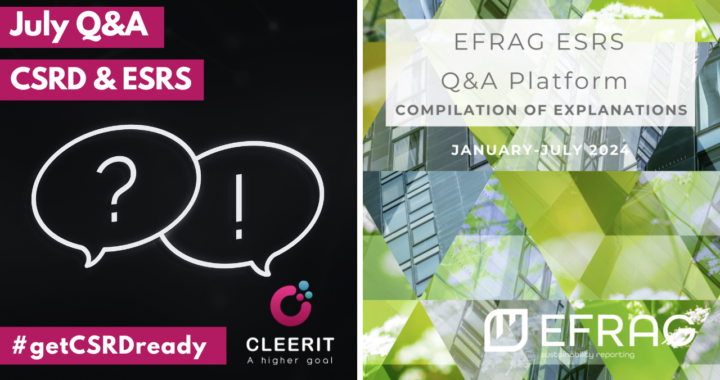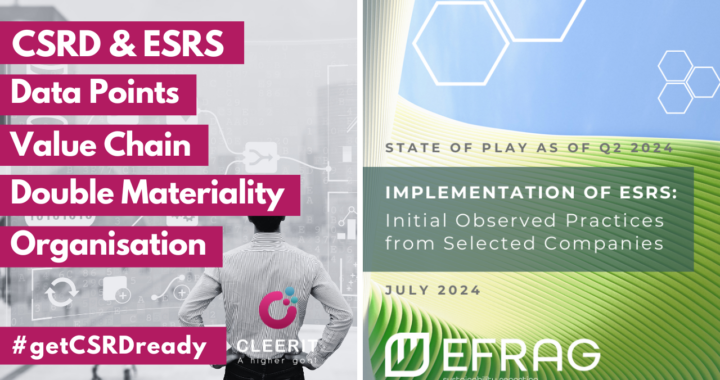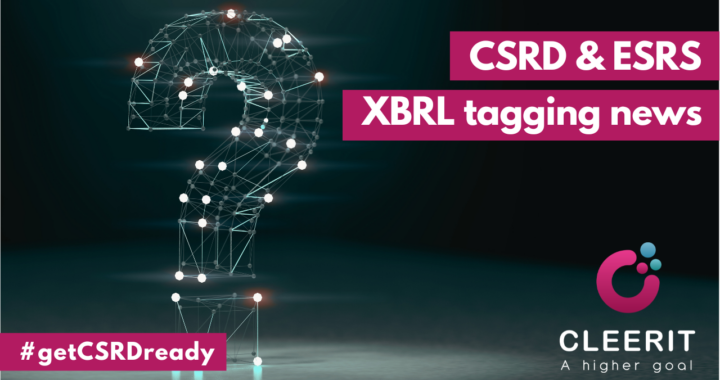On November 15, the European Commission organized a one-day seminar in 4 sessions, with the objective of supporting companies in applying the European sustainability reporting standards (ESRS). Here are some key takeaways from sessions 1 and 2.
Session 1: First experiences in applying ESRS
In the opening remarks Sean Berrigan, Director-General DG FISMA, European Commission, reminded us that CSRD and ESRS are a necessary part of the EU Green Deal, and are expected to reinforce EU companies’ resilience and competitiveness, as well as reduce the risk for financial instability.
The new rules have far-reaching consequences. They will benefit companies in the medium-long term. Standardization is simplification, and will ultimately reduce burden.
Increased access to information will shape company strategy, and drive transformation and governance. But new systems, skills and processes are now needed, which also brings costs and uncertainty.
So, the single most important message is to prepare in a proportionate and pragmatic way, applying common sense, and with a learning mind-set. Don’t report more information than required. Make decisions on what is important and use the phase-in measure provisions.
“Reporting will improve over time, probably rather quickly, as quality improves.”
Natalie Dogniez, Director of EUROSIF, voiced investors’ desperate need of easy access to granular and independently verified ESG data. They need reliable information, and transparency on methodology and preparation, to make informed investment decisions – particularly from a risk point of view – and evaluate future revenue potential. The fear of greenwashing accusation is also key challenge for asset managers.
Implementation is never easy, it’s always challenging – but let’s not forget the purpose and end game of this challenge.”
Tim Mohin at Boston Consulting Group walked us through the key learnings from a study of the emerging approaches of 28 early ESRS adopters (a summary is available here: https://cleeritesg.com/index.php/2024/07/28/efrag-report-on-observed-practices-and-challenges-in-the-initial-phase-of-esrs-implementation/).
He also underscored that “sunshine is the best disinfectant”, and that information triggers change. “Prepare to comply but also to use the information in strategy – it’s a management strategy exercise not a tick-box exercise”.
Patrick de Cambourg, Chair of EFRAG SRB, introduced by saying that “reliable data is the mother of all battles, or even better, is the mother of all democratic and social consensus on how businesses can contribute to value creation both for the business and for society”.
“The cost of not reporting will be higher than that of reporting.”
He stressed the need to create a modern data environment, and that digitizing will play a key role in reducing burden. “In a modern world, information has to be digitized – if it’s provided on paper, the vacuum will be filled with private providers”.
Standardization and interoperability are also key. “Many reports are not needed, one is enough, ESRS, to also comply with ISSB and in reference with GRI”.
He also spoke about the challenges companies are currently facing, saying that it’s important not to overkill.
“Report only what is material, don’t obscure important information with a high quantity of less important information. Apply common sense, it’s not a tick-box exercise, materiality is pivotable”.
He specifically mentioned three current challenges:
- He regretted that the IG3 Excel list was too technical (at a meeting with EFRAG they spoke about the “CSRD anxiety” that it has created). 70% of the information to be provided is narrative, and the number of datapoints in the IG3 list reflects the granularity needed to avoid only having long texts. “Don’t be scared. We learn, but let’s take this seriously.”
- He also explained that the situation of non-transposition in some countries is creating a complicated situation, with many companies preparing to report on a voluntary basis.
- Asked about reduction expectations, he said that he does not have a crystal bowl, but that clearly large multinationals are not the same as smaller large companies with 250 employees. Subdividing this group, using for example LSME for the smaller companies, could provide relief, as could the timing of sector standards. But in the absence of sector specific standards, entity specific disclosures still apply in order to cover material issues.
A question was also asked about scoring and net vs. gross evaluation. The answer was that gross evaluation is standard practice in risk management. Inherent risks can be a source fueling materiality. “The gross becomes net following your action plan, and your net will become your gross in the next reporting period.”
Explanation: The gross risk is the amount of damage caused by a risk when all preventive measures fail. Businesses aim to lessen this inherent risk as much as possible. The net risk is the amount of damage caused when preventive measures are used successfully.
“In time we will have merging DMA practices, we don’t yet have standard practices.” Judgement and exercising common sens is key – no thresholds fit all. “It’s a novel phase, it will converge.”
Benedette Testino at Boston Consulting Group, explained that companies currently apply different approaches. Some aim for minimum compliance in a cautious approach. The most advanced use CSRD as a communication of what is under-way, they leverage CSRD as a platform to showcase achievements to the market. She is expecting companies to subsequently be disclosing more and more.
Filip Gregor, Director for Responsible Companies at Frank Bold, also stressed the importance of focusing on material strategic issues for transformation by using common sense, not applying abstract scoring methods.
Scoring is important, but applying transparent judgement is key to achieve purpose and connect to the board in a meaningful way. “It’s not true that everything has to be put in numbers, quality information is sometimes more useful than unreliable metrics.”
He also reminded us that there are tools on the market to help get information on heighten risk areas.
Niels Peulicke Anderson, Head of ESG Accounting at Orsted, explained that Orsted had moved sustainability reporting to finance and integrated ESG data into financial processes in order to achieve the same trust and robustness as for financial statements.
Before this change, they had 12 strategic targets, whereof half were outside the financial scope, which did not make sense to them.
He stressed that the first year was about filling the gaps, especially for qualitative datapoints since they already had the metrics more or less under control.
They started one year in advance, which gave them time to build a new structure and understand what it was about, without the need for auditing.
Now they are in a good place with the reporting, and the focus has moved to “how this will this change the company”.
It has created a new platform to work with sustainability in a structured way, aligning the process across all material topics – and the task is the same for everyone. This will also help in the work with suppliers.
Session 2: Audit and assurance of sustainability reporting
Marjolein Doblado, Chair of CEAOB International Auditing Standards Subgroup – for the Committee of European Audit Oversight Bodies, shared information about auditing, reminding us that the assurance opinion is currently based on a limited assurance engagement as regards the compliance of the sustainability statement.
The assurance providers are expected to perform procedures that enable them to conclude that
- no matter has come to their attention to cause them to believe that the information included in the sustainability statement is not fairly presented, in all material respects, in accordance with ESRS –
- including the process carried out by the undertaking to identify the information reported pursuant to ESRS (the double materiality assessment process).
Again, it was repeated that matriality is not a calculation, judgement is needed.
Marc Boissonnet, ESG Director at TIC Council – where his role is to bring TIC (testing, inspection and certification companies) sector support to build the future sustainability landscape – shared that there has been positive feedback from large French companies so far.
The increase of work is not as big as thought, there has been no push-back, except isolated cases. The number of quantitative datapoints has not increased dramatically compared to before.
However, the qualitative information needed, on for example policies, targets and actions (MDR) has increased, “but it’s no nightmare”.
France prepared early, which has significantly helped. Globally, the new framework has been well welcomed in France.
He noted the following challenges:
- Not many member states have accepted to open the market to independent assurance providers. “We are losing the opportunity to create a more competitive service, with increased quality at lower costs”.
- There has been a significant increase in the audit duration, which came as a surprise. The number of days has been multiplied by 10 compared to NFRD, and has not been well explained.
- Information requirements from auditors are new, and quite extensive. “There are many questions, and some individuals want to protect themselves, so they request a lot of evidence.”
- Some auditors are entering the activity without sustainability experience, and it’s not possible to simply transpose financial auditing, they will have to learn to adapt.
- “The scope has increased with CSRD. Auditing is not always easy. We need to find a suitable solution, but we are on track and move forward efficiently.”
“The most difficult phase is to build the first report, and put the tools in place. Then it will become easier.” Don’t just report – move forward, adapt. This applies for all companies.
Markus Pretzle, ESG Director at TIP Group, concluded by stressing that Excel is not feasible going forward, you need a solution.
The source of the information has to be accessible by auditors, and efficiently stored for them to be able to check data and processes. “You need to make their life easier”.
The link to the recording of the event:
#getCSRDready

